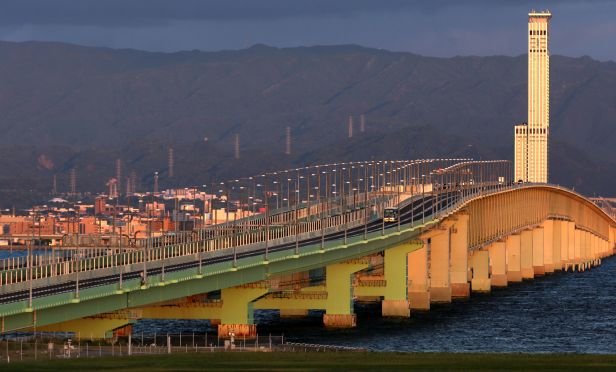 A bus drives on a bridge leading to the Kansai International Airport in Izumisano City, Osaka, Japan, on Sunday, June 28, 2015. (Photo: Buddhika Weerasinghe/Bloomberg)
A bus drives on a bridge leading to the Kansai International Airport in Izumisano City, Osaka, Japan, on Sunday, June 28, 2015. (Photo: Buddhika Weerasinghe/Bloomberg)
(Bloomberg) – Regions around Osaka, Japan's second biggest population center, struggled to recover from damage left by Typhoon Jebi, which left 10 people dead, hundreds of thousands of buildings without power and the area's main airport closed.
|Strongest tropical cyclone to come ashore in 25 years
Kansai International Airport, a key transport and cargo hub that lies on an artificial island in Osaka Bay almost directly in the typhoon's path, remained shut on Wednesday. Jebi, the strongest tropical cyclone to come ashore in 25 years, flooded its runways, and a tanker smashed into the road and rail bridge connecting the airport to the mainland.
Recommended For You
Want to continue reading?
Become a Free PropertyCasualty360 Digital Reader
Your access to unlimited PropertyCasualty360 content isn’t changing.
Once you are an ALM digital member, you’ll receive:
- Breaking insurance news and analysis, on-site and via our newsletters and custom alerts
- Weekly Insurance Speak podcast featuring exclusive interviews with industry leaders
- Educational webcasts, white papers, and ebooks from industry thought leaders
- Critical converage of the employee benefits and financial advisory markets on our other ALM sites, BenefitsPRO and ThinkAdvisor
Already have an account? Sign In Now
© 2025 ALM Global, LLC, All Rights Reserved. Request academic re-use from www.copyright.com. All other uses, submit a request to [email protected]. For more information visit Asset & Logo Licensing.








